2 Standards, definitions and books
2.1 Standards
Energy standards and references
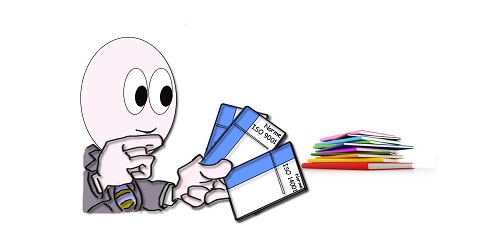
.jpg) The ISO 50001 family mainly includes the standards:
The ISO 50001 family mainly includes the standards:
- ISO 50001 (2018), Energy management systems – Requirements with guidance for implementation
- ISO 50002 (2014), Energy audits – Requirements with guidance for use
- ISO 50003 (2021), Energy management systems – Requirements for bodies providing audit and certification of energy management systems
- ISO 50004 (2020), Energy management systems – Guidelines for implementing, maintaining, and improving an energy management system
- ISO 50005 (2021), Energy management systems – Guidelines for phased implementation
- ISO 50006 (2023), Energy management systems — Evaluating energy performance using energy performance indicators and energy baselines
- ISO 50007 (2017), Energy services — Guidelines for the assessment and improvement of the energy service to users
- ISO 50015 (2014), Energy Management Systems – Measurement and verification of the energy performance of organizations – General principles and recommendations
- ISO 50046 (2019), General methods for estimating energy savings
- ISO 50047 (2016), Energy Saving – Determining energy savings in organizations
ISO standards (over 22,000) are used in countless fields and are recognized worldwide.
The ISO 9000 family of standards includes three essential booklets (and guidelines):
- ISO 9000 (2015): Quality management systems – Fundamentals and vocabulary
- ISO 9001 (2015): Quality management systems – Requirements
- ISO/TS 9002 (2016): Quality management systems – Guidelines for the application of ISO 9001:2015
- ISO 9004 (2018): Quality management – Quality of an organization – Guidelines for achieving sustained performance
A standard added in 2002 (and revised in 2018) is:
ISO 19011 (2018): “Guidelines for auditing management systems”
ISO 31000: 2018 “Risk management – Guidelines” establishes the principles and process risk management, risk assessment, and risk treatment.
Three French documents related to best practices and processes with explanations, recommendations, and examples:
- AC X50-178 (agreement, 2002) Quality Management – Process Management – Best Practices and Feedback
- BP X30-120 (Best Practices, 2006) Energy – Energy Diagnostics in Industry
- FD X50-176 (documentation booklet, 2017) Management Tools – Process Management
The NF EN 17267 (2019) standard “Energy Measurement and Monitoring Plan – Design and Implementation – Principles for Collecting Energy Data” specifies the requirements and principles for the design and implementation of an energy measurement and monitoring plan.
ISO 37301 (2021) "Compliance management systems — Requirements with guidance for implementation" helps you comply with laws, regulations, and ethical standards and reduce risks.
All of these standards and many others can be ordered (in electronic or paper format) from the AFNOR (French Association for Standardization) website in the shop, catalog, standards section, or from the ISO website.
More than 28,000 standards (in English and other languages) are available free of charge on Public.resource.org.
2.2 Definitions
Terms and definitions related to quality and energy

The beginning of wisdom is the definition of terms. Socrates
Specific qualityaptitude to fulfill requirements (see also ISO 9000, 3.6.2) and energy terms:
Competence: personal skills, knowledge and experiences
Conformity: fulfillment of a specified requirement
Corrective action: action to eliminate the causes of nonconformity or any other undesirable event and to prevent their recurrence
Customer: anyone who receives a product
Customer satisfaction: top priority objective of every quality management system related to the satisfaction of customer requirements
Document: any support allowing the treatment of information
Effectiveness: capacity to realize planned activities with minimum effort
Efficiency: financial relationship between achieved results and used resources
Energy baseline (EnB): quantified reference of energy performance
Energy management system (EnMS): set of processes allowing energy objectives to be achieved
Energy manager: leader in the journey towards energy excellence
Energy performance: measurable result of energy consumption, use and effectiveness
Energy performance indicator (EnPI): value of a parameter, allowing energy performance to be measured
Energy review: analysis of energy performance to identify opportunities for improvement
Energy objective: energy related, measurable goal that must be achieved
External provider (supplier): an entity that provides a product
Indicator (target): value of a parameter, associated with an objective, allowing the objective measure of its effectiveness
Management system: set of processes allowing objectives to be achieved
Nonconformity: fnon-fulfillment of a specified requirement
Organization (company): a structure that satisfies a need
Procedure: document describing the actions to be taken to carry out a process
Process: activities that transform inputs into outputs
Product (or service): every result of a process or activity
Quality: aptitude to fulfill requirements
Quality management: activities allowing the control of an organization with regard to quality
Requirement: explicit or implicit need or expectation
Risk: likelihood of occurrence of a threat or an opportunity
Significant energy use (SEU): significant part of consumption with potential for improvement
Stakeholder: person, group or company that can affect or be affecteded by an organization
Top management: group or persons in charge of the company's control at the highest level
In the terminology of management systemsset of processes allowing objectives to be achieved (see also ISO 9000, 3.5.3), do not confuse:
- accident and incident
- an accident is an unexpected serious event
- an incident is an event that can lead to an accident
- anomaly, defect, dysfunction, failure, nonconformity, reject and waste:
- anomaly is a deviation from what is expected
- defect is the non-fulfillment of a requirement related to an intended use
- dysfunction is a degraded function that can lead to a failure
- failure is when a function has become unfit
- nonconformity is the non-fulfillment of a requirement in production
- reject is a nonconforming product that will be destroyed
- waste is when there are added costs but no value
- audit program and plan
- an audit program is the annual planning of the audits
- an audit plan is the description of the audit activities
- audit, inspection, auditee and auditor
- an audit is the process of obtaining audit evidence
- an inspection is the conformity verification of a process and product
- an auditee is the one who is audited
- an auditor is the one who conducts the audit
- control and optimize
- control is meeting the objectives
- optimize is searching for the best possible results
- customer, external provider and subcontractor
- a customer receives a product
- an external provider provides a service or a product
- a subcontractor provides a product or service on which specific work is done
- effectiveness and efficiency
- effectiveness is the level of achievement of planned results
- efficiency is the ratio between results and resources
- energy review, internal audit and management review
- energy review is the analysis of energy consumption
- internal audit is the assessment of the compliance of the EnMS
- management review is the assessment of the effectiveness of the EnMS
- follow-up and review
- follow-up is the verification of the obtained results of an action
- review is the analysis of the effectiveness in achieving objectives
- inform and communicate
- to inform is to give someone meaningful data
- to communicate is to pass on a message, to listen to the reaction and discuss
- objective and indicator
- an objective is a sought after commitment
- an indicator is the information on the difference between the pre-set objective and the achieved result
- organization and enterprise, society, company
- organization is the term used by the ISO 50001 standard as the entity between the supplier and the customer
- an enterprise, society and company are examples of organizations
- process, procedure, product, activity and task
- a process is how we satisfy the customer using people to achieve the objectives
- a procedure is the description of how we should conform to the rules
- a product is the result of a process
- an activity is a set of tasks
- a task is a sequence of simple operations
Remark 1: the use of ISO 50001 definitions is recommended. The most important thing is to determinate a common and unequivocal vocabulary for everyone in the company.
Remark 2: the customer can also be the user, the beneficiary, the trigger, the ordering party, the consumer.
Remark 3: between indicator and target our preference is for indicator.
Remark 4: between stakeholder and interested party our preference is for stakeholder.
Remark 5: documented information is any information that we must maintain (procedure .gif) ) or retain (record
) or retain (record .gif) )
)
For other definitions, comments, explanations and interpretations that you don’t find in this module and annex 06, you can consult: .jpg)

- ISO Online Browsing platform (OBP)
- IEC Electropedia
- ISO 9000: 2015 - Quality management systems. Fundamentals and vocabulary, (2015)
2.3 Books
Books related to quality and energy
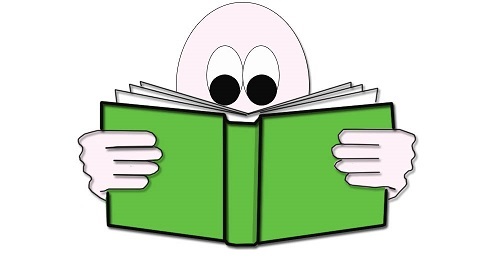
.jpg) Books for further reading on qualityaptitude to fulfill requirements (see also ISO 9000, 3.6.2) and energy:
Books for further reading on qualityaptitude to fulfill requirements (see also ISO 9000, 3.6.2) and energy:
.jpg) Edwards Deming, Out of the Crisis, MIT Press, 1982
Edwards Deming, Out of the Crisis, MIT Press, 1982(1).jpg) Eliyahu Goldratt, Jeff Cox, The Goal, A Process of Ongoing Improvement, North River Press, 1984
Eliyahu Goldratt, Jeff Cox, The Goal, A Process of Ongoing Improvement, North River Press, 1984.jpg) Masaaki Imai, KAIZEN, The Key to Japan’s Competitive Success, McGraw-Hill, 1986
Masaaki Imai, KAIZEN, The Key to Japan’s Competitive Success, McGraw-Hill, 1986(1).jpg) James Harrington, Poor-Quality Cost, Dekker, 1987
James Harrington, Poor-Quality Cost, Dekker, 1987(2).jpg) Larry Webber, Michael Wallace, Quality Control for Dummies, Wiley, 2007
Larry Webber, Michael Wallace, Quality Control for Dummies, Wiley, 2007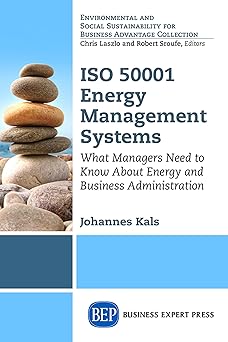 Johannes Kals, ISO 50001 Energy Management Systems: What Managers Need to Know About Energy and Business Administration, Business Expert Press, 2015
Johannes Kals, ISO 50001 Energy Management Systems: What Managers Need to Know About Energy and Business Administration, Business Expert Press, 2015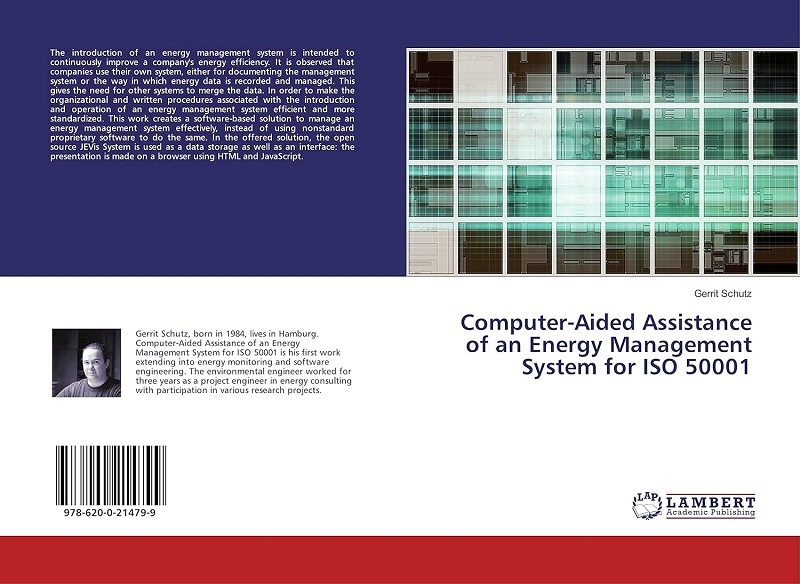 Gerrit Schutz, Computer-Aided Assistance of an Energy Management System for ISO 50001, Lambert, 2019
Gerrit Schutz, Computer-Aided Assistance of an Energy Management System for ISO 50001, Lambert, 2019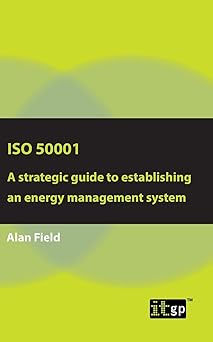 Alan Field, Iso 50001: A Strategic Guide to Establishing an Energy Management System, IT Governance, 2019
Alan Field, Iso 50001: A Strategic Guide to Establishing an Energy Management System, IT Governance, 2019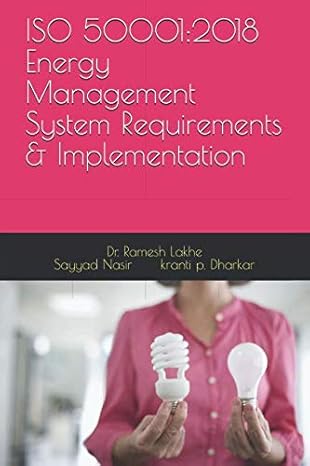 Ramesh Lakhe et al, ISO 50001:2018 Energy Management System Requirements & Implementation, 2019
Ramesh Lakhe et al, ISO 50001:2018 Energy Management System Requirements & Implementation, 2019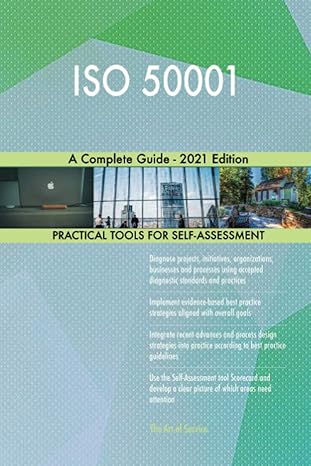 The Art of Service, ISO 50001 A Complete Guide - 2021 Edition, The Art of Service, 2020
The Art of Service, ISO 50001 A Complete Guide - 2021 Edition, The Art of Service, 2020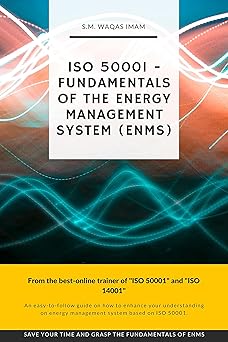 Waqas Imam, ISO 50001 - Fundamentals of Energy Management System (EnMS): An Expert Overview of the Energy Management System (EnMS) along with ISO 50001:2018 context analysis, and clauses, Exoexcellence, 2021
Waqas Imam, ISO 50001 - Fundamentals of Energy Management System (EnMS): An Expert Overview of the Energy Management System (EnMS) along with ISO 50001:2018 context analysis, and clauses, Exoexcellence, 2021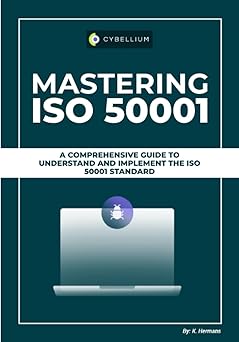 Kris Hermans, Mastering ISO 50001: A Comprehensive Guide To Understand And Implement The ISO 50001 Standard, Independently published, 2023
Kris Hermans, Mastering ISO 50001: A Comprehensive Guide To Understand And Implement The ISO 50001 Standard, Independently published, 2023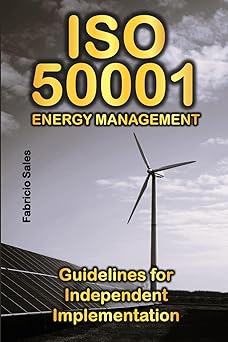 Fabricio Silva, ISO 50001 Energy Management: Guidelines for Independent Implementation, Independently published, 2024
Fabricio Silva, ISO 50001 Energy Management: Guidelines for Independent Implementation, Independently published, 2024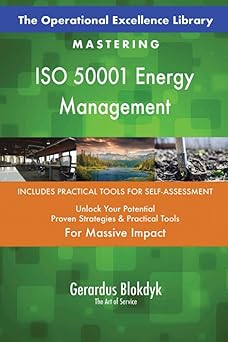 Gerardus Blokdyk, The Operational Excellence Library; Mastering ISO 50001 Energy Management, 5STARCooks, 2024
Gerardus Blokdyk, The Operational Excellence Library; Mastering ISO 50001 Energy Management, 5STARCooks, 2024
When I think of all the books still left for me to read, I am certain of further happiness. Jules Renard
